

William Stopford
The cars axed in 2025 that we'll miss the most
20 Hours Ago
Does Germany's benchmark luxury sports sedan keep its shine after a mid-life facelift? And, does PHEV power dull or enhance the experience?
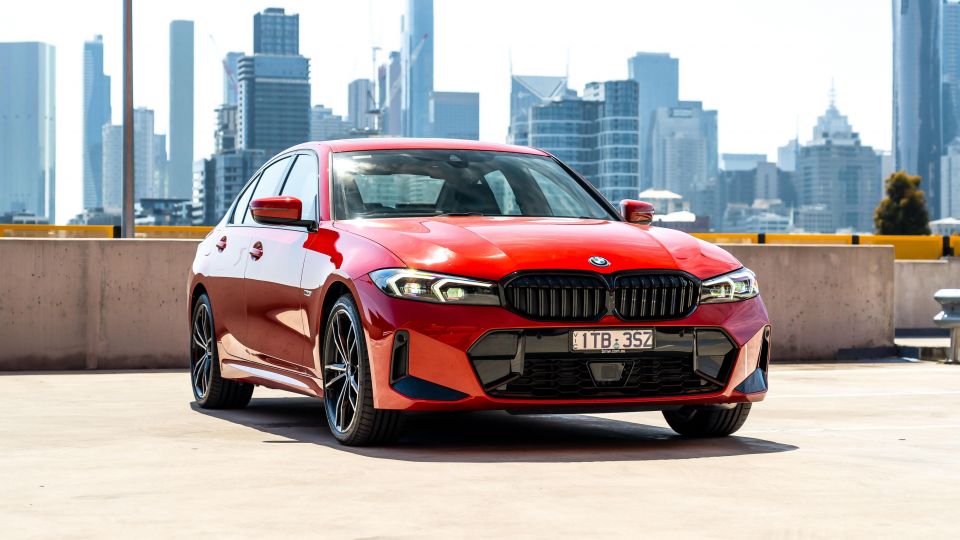
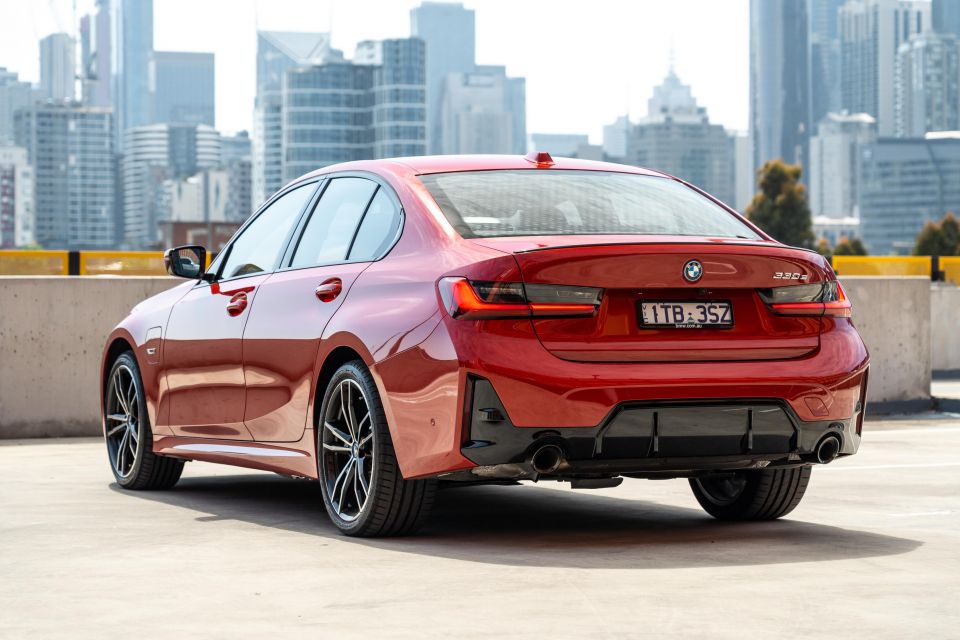

Quickly see how this car stacks up against its competition. Select any benchmark to see more details.
Where expert car reviews meet expert car buying – CarExpert gives you trusted advice, personalised service and real savings on your next new car.
The BMW 3 Series has long been lauded as the benchmark luxury sports sedan, but as the buying population continue to gravitate more and more into SUVs, it’s becoming a rarer sight these days.
So far in 2022 (to November 30), BMW has registered 2625 units of the 3 Series in Australia compared to 4370 for the related X3 SUV. Once upon a time, that ratio would have been the other way around.
The 3 Series line-up recently received BMW’s usual ‘LCI’ mid-life facelift for 2023, bringing revised looks front and rear, as well as the brand’s latest iDrive 8 infotainment package with conjoined high-resolution widescreen displays.

It also meant significant price increases, with some variants up by more than $10,000. They mean the 320i and 330i are line-ball with the new-generation Mercedes-Benz C200 and C300…
Here on test we have the 2023 BMW 330e Sedan, the sole remaining plug-in hybrid offering in the segment now the C300e is no longer available here.
Given it’s priced in line with all-electric alternatives, and is in some cases dearer than them, does the latest 3 Series PHEV keep the nameplate’s core values up to task?
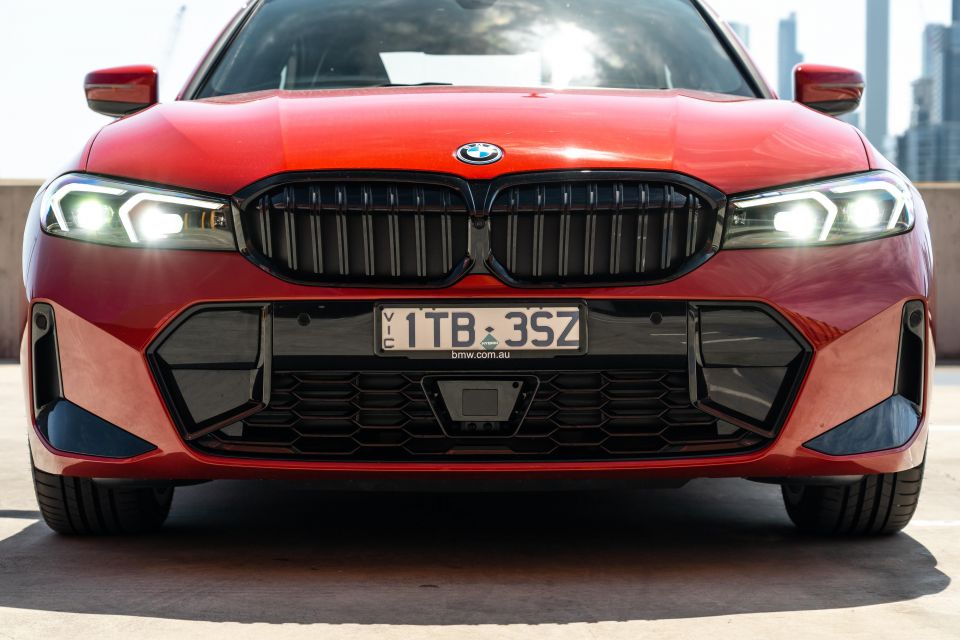
The 3 Series range now starts from $78,900 before on-road costs for the 320i Sedan– $5400 more than before – while the plug-in hybrid 330e Sedan has risen by $7100 to $97,400 before on-roads; or more than $100,000 drive-away.
Elsewhere in the range, the 330i Sedan ($93,400) and Touring ($94,400) are up by a whopping $10,100 plus on-roads, while the M340i xDrive performance version consolidates the outgoing Pure and standard variants, at $104,990.
We’ll get into the ins and outs of what you get later, but the only properly electrified (HEV, PHEV or EV) rivals in the 3 Series’s segment are the Lexus ES300h (from $64,540), Polestar 2 (from $63,900) and Tesla Model 3 (from $65,500).
You can also count the BMW’s all-electric i4 stablemate (from $99,900), and there’s a mild-hybrid alternative in the Audi A4 (from $64,900) and Volvo S60 (from $65,990). The Mercedes-Benz C-Class no longer offers a PHEV option locally, though there is also the Peugeot 508 GT Fastback Plug-in Hybrid is priced from $81,610 plus on-roads.
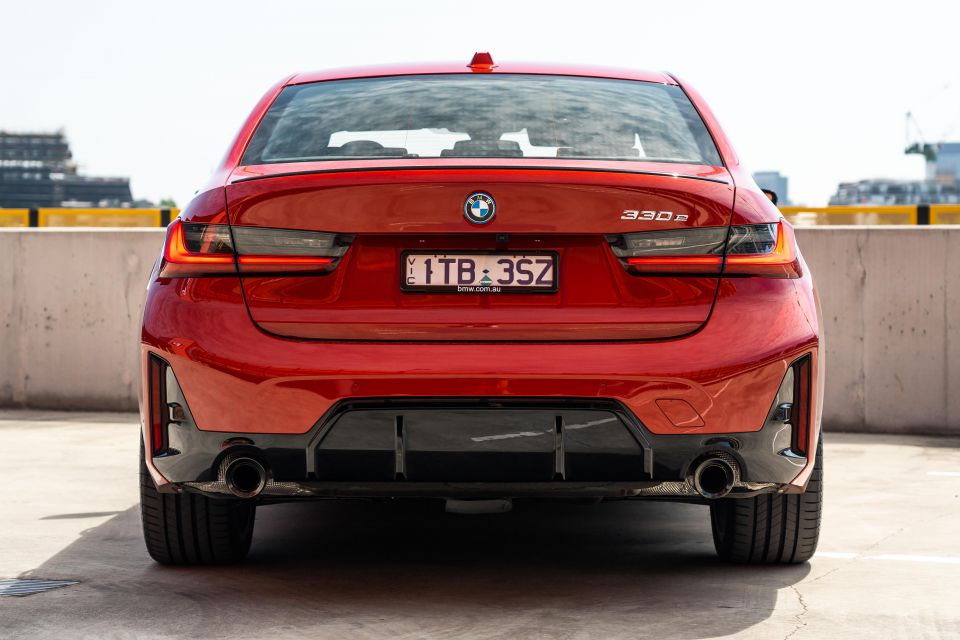
2023 BMW 3 Series pricing:
Prices are before on-road costs
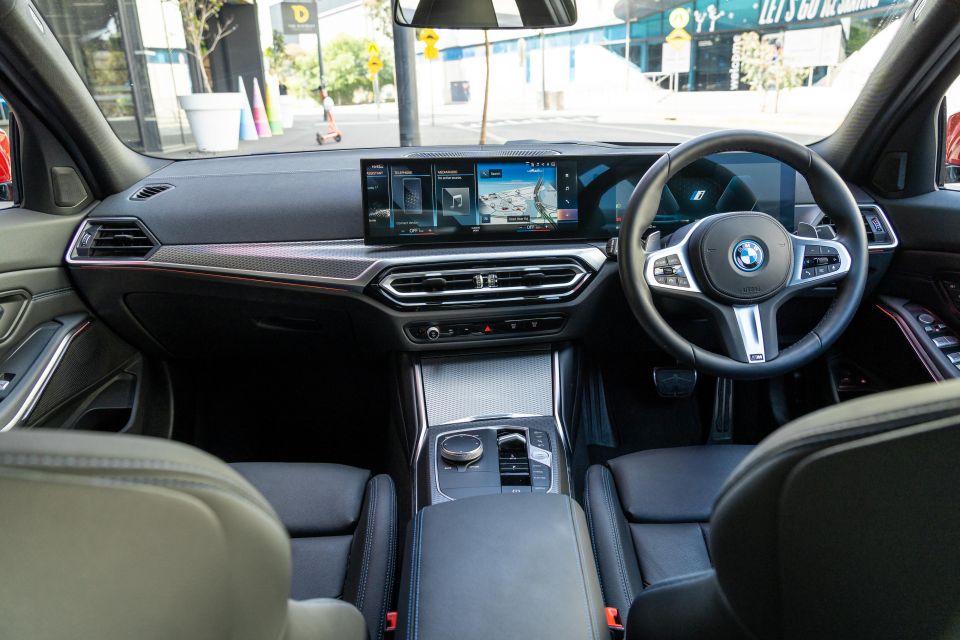
Buy your new car without the stress. It's fast, simple and completely free.

Great service from Travis and team, second time I have used this business would not hesitate to recommend them to anyone
Craig C.
Purchased a Ford Ranger in Sunshine Coast, QLD
CarExpert helped Craig save thousands on his Ford Ranger, now let us save you on your next new car.
Find a dealBeing a facelift and not a whole new generation, the 3 Series’s cabin is fairly familiar with a few key changes.
New for the LCI is the BMW Operating System 8 package, which combines a 12.3-inch digital instrument cluster with a massive 14.9-inch touchscreen infotainment system in a gorgeous curved housing.
It really has some wow factor when you hop in, and will appeal to those who want the latest tech a manufacturer has to offer – we’ve seen this setup launch with the BMW iX EV, and it’s since filtered to most of the range.
For me, while it’s all glossy, and pretty, and high-resolution, the eighth-generation system takes a step back in some areas compared to BMW OS7.0 and even older versions of BMW’s infotainment.

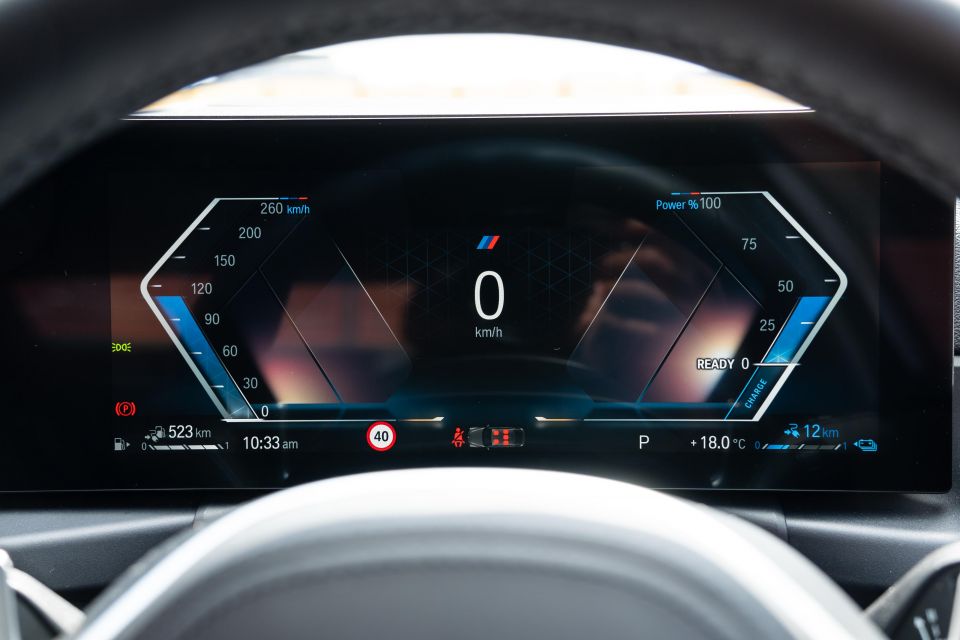
BMW has retained the iDrive rotary controller in the 3 Series, but iDrive 8 culls a lot of physical switchgear and requires touchscreen inputs to access many vehicle functions – including climate control.
Setting and forgetting the temperature is easy enough, but having to dive through menus to access air recirculation, for example, seems unintuitive. Luckily, it has an auto setting so you can let it do it on its own.
BMW has thankfully retained actual buttons for the front and rear de-misters, but otherwise everything is buried in the touchscreen, and the app drawer again takes a little getting used to as it’s not as simple as previous generations.
Wireless Apple CarPlay worked pretty much faultlessly, and there’s wireless Android Auto for those who don’t own an iPhone. Native satellite navigation with live traffic updates, DAB+ radio and BMW ConnectedDrive services round out the features list, with the latter also facilitating over-the-air updates.
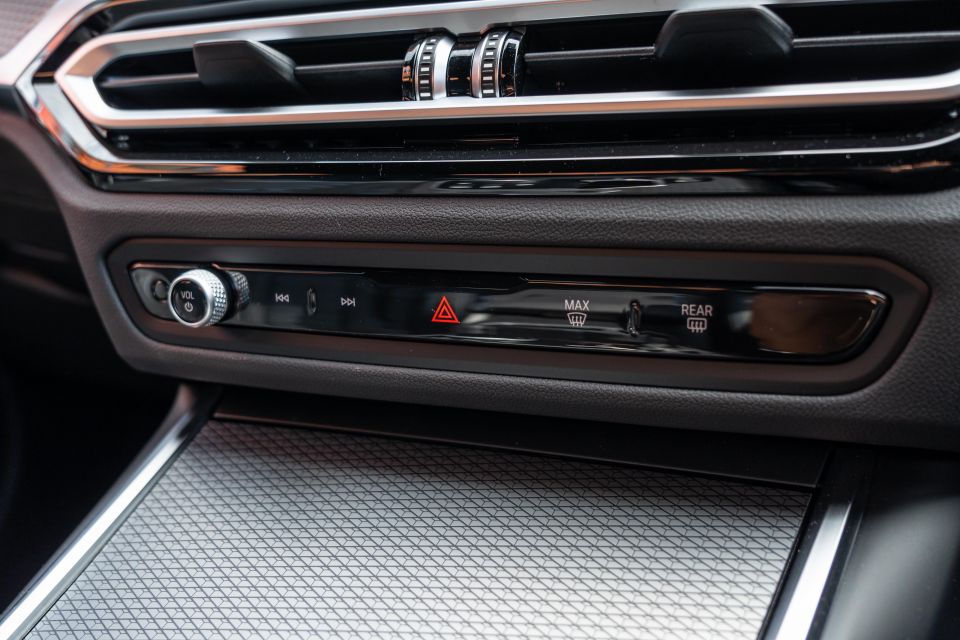
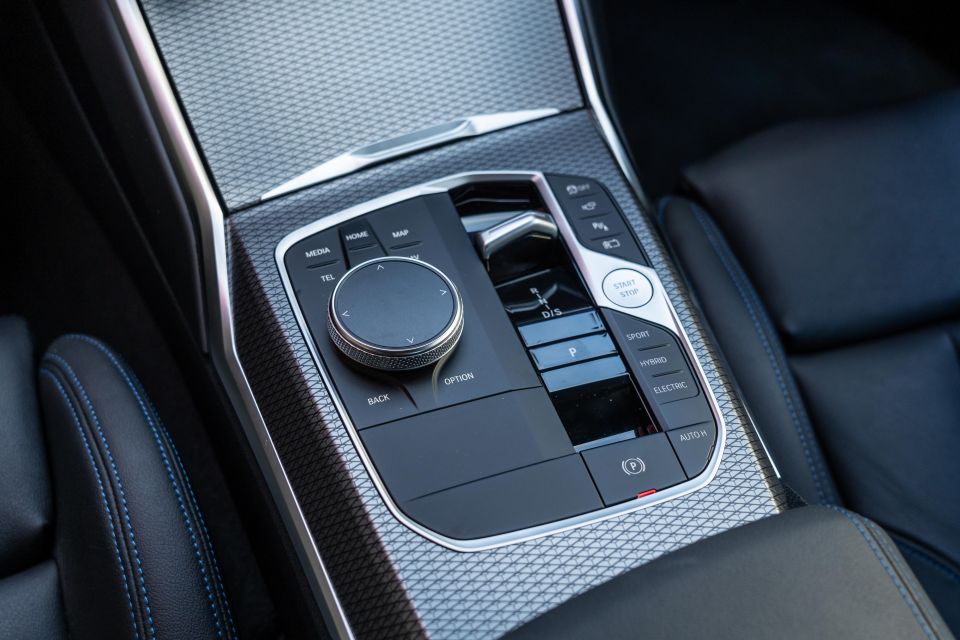
There’s also the Intelligent Personal Assistant activated by saying “Hey BMW“, and for the 330e plug-in hybrid owners can use the My BMW app to control and monitor the charging.
It’s a mixed bag in other respects, too. There’s a physical knob for the volume as well as steering wheel controls, but the heated seat buttons are again in the touchscreen.
The design of the instrument cluster’s graphics (with a couple of minor variations) isn’t to my tastes. I would love the option of more conventional speedo and tacho dials, given BMW held on to analogue gauges for so long and had some of the best clusters in the business.
There’s a new stubby e-shifter as part of this update as well, reminiscent of what we’re seeing from the Volkswagen Group. Call me a Debby Downer, but I liked the old BMW wand selector better.
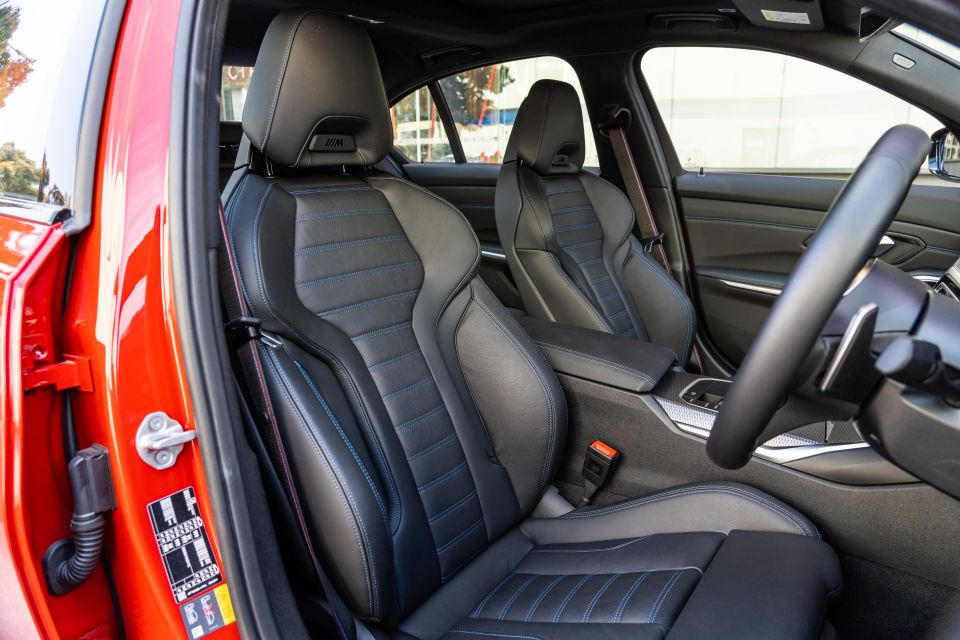
Storage is good, with a big cubby under the centre stack hiding a wireless phone charger, and cupholders under a damped lid. The storage bin under the front-centre armrest is accommodating for your odds and ends.
The M Sport front seats are excellent, and sort of look like the racier units in the new M3 and M4.
Not only do they look sexy, they’re super comfortable and offer a good range of electric adjustment for both the driver and front passenger. My favourite thing is the extendable under-thigh cushion – luxe.
There’s additionally excellent side and shoulder bolstering which isn’t always the norm even at this end of the market, and there’s electric lumbar for those with a bad back.
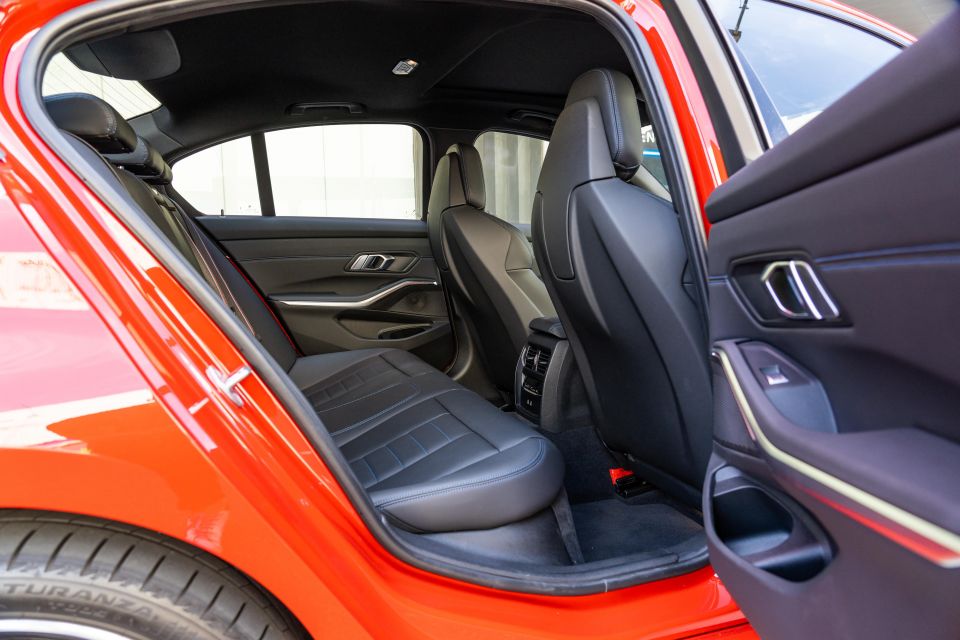
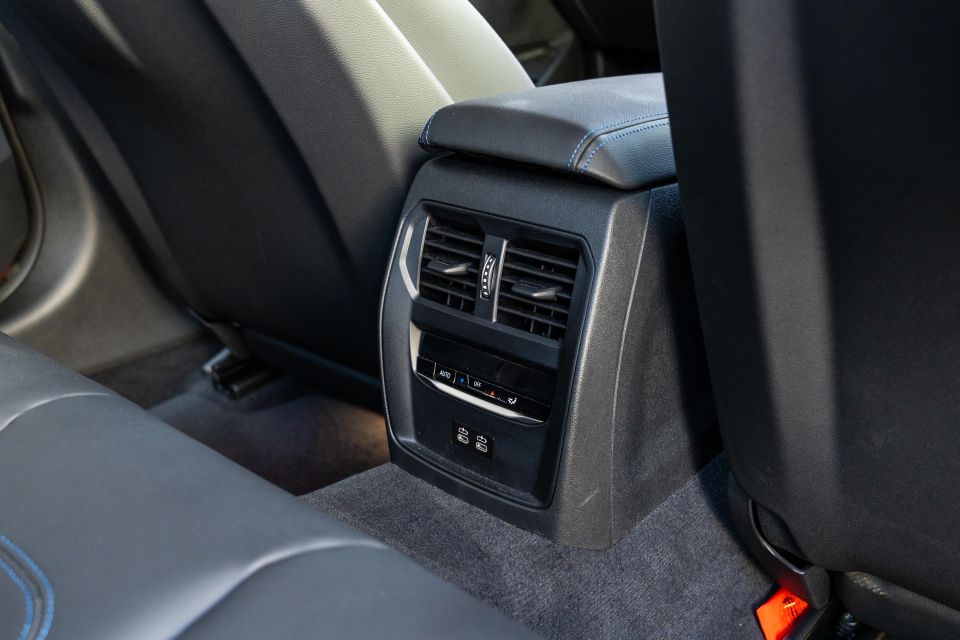
This segment is known for having relatively tight rear accomodation, but as before the new model has adequate room for two adults in the back. It’s still a class-leader if you need to use the second row in your car but don’t want an SUV.
My 6’1 frame can sit behind my preferred driving position just fine, with decent head-, knee- and legroom. There are also plenty of amenities to keep you comfortable when you’re back there.
Rear air vents with a third zone of climate control are handy, as are the dual USB-C charge ports to keep your devices juiced. Oddly, there are no map pockets behind those chunky M Sport front seats, which also hinder forward visibility for kids.
There are bottle holders in the door pockets, as well as the requisite ISOFIX anchors on the outboard seats, and top-tether points across all three rear positions.

The 330e loses out on some boot volume compared to its non-PHEV stablemates due to the placement of its lithium-ion battery under the floor.
At 375 litres it’s no bigger than the luggage area of a Volkswagen Golf, but is still enough for a decent amount of luggage. There’s also an underfloor area to hide your charging cables out of sight.
For reference, other 3 Series Sedan models have 480 litres of luggage capacity – so you’re losing a hefty 105L for going with the plug-in.
Given the 330e rides on run-flat tyres around its 19-inch alloys, there’s no spare wheel.
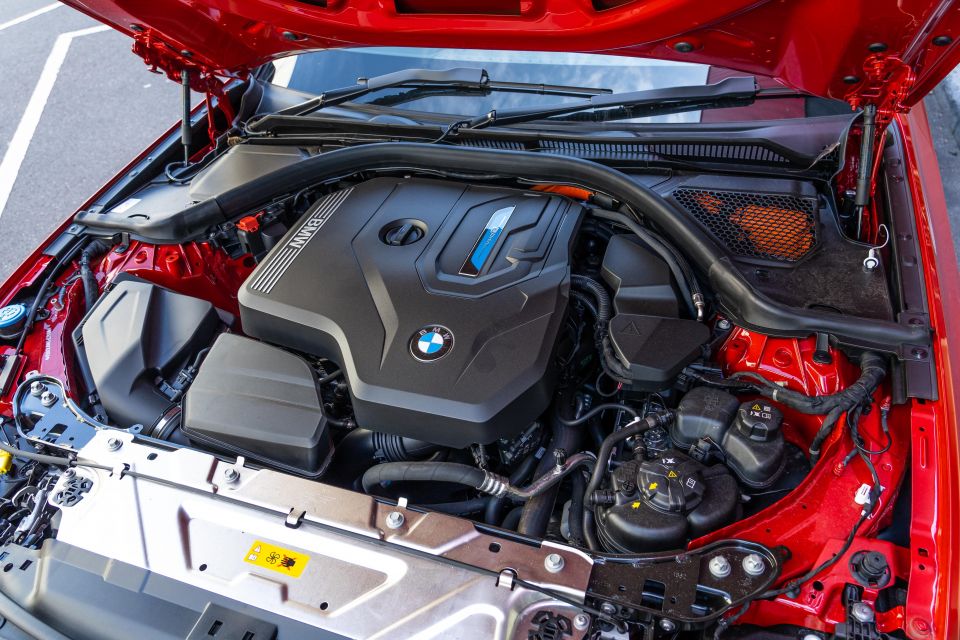
The 330e teams the 320i’s 135kW/300Nm 2.0-litre turbocharged petrol engine with an 80kW/265Nm electric motor and 12kWh (11.2kWh net) lithium-ion battery pack.
BMW quotes system outputs of 215kW and 420Nm. The mid-life update didn’t bring any revisions to the powertrain. Drive is sent to the rear wheels via an eight-speed automatic, as before.
Zero to 100km/h takes a claimed 5.8 seconds, while top speed is rated at 230km/h – 0.1s quicker than the 330i. The 330e can run in EV mode at speeds of up to 140km/h.
Combined fuel consumption is a thrifty 2.5L per 100km provided you start with a charged battery, with CO2 emissions quoted at 57g/km. There’s a 40L fuel tank on board, which requires 95 RON premium unleaded as a minimum.
The company claims the 3 Series PHEV can do up to 57 kilometres on a full charge, and takes a claimed 3.75 hours to charge from 0-100 per cent using a 3.7kW AC charger.

Having spent some time with the X3 xDrive30e with virtually the same drivetrain, bar the all-wheel drive system, I wasn’t really sure what to expect from the 3 Series PHEV.
I wasn’t particularly impressed by the X3 plug-in, which felt under-powered in EV mode and offered a fairly short zero-emissions driving range – you’ll get 40 kilometres in the real word, if you’re lucky.
The 330e Sedan was a very different experience, and all for the better.
At 1845kg unladen, the 330e Sedan is over 200kg lighter than the X3 xDrive30e (2065kg), which no doubt helps make the rear-driven sedan feel more lithe and responsive both in a straight line and in corners.
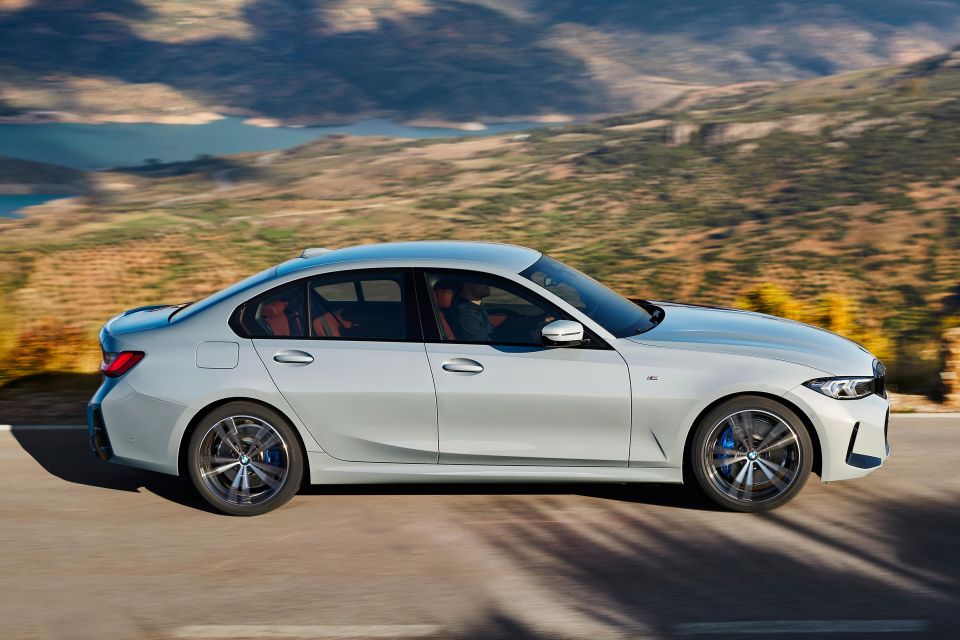
On its own the e-motor generates 80kW (109hp) and 265Nm, which is about the same as a three-cylinder turbo petrol engine; only this has no lag thanks to the immediate response of electric motors.
Sure it’s no powerhouse, but in normal driving the 330e will effortlessly cruise around town – where this drivetrain is designed to do its best work – and is more than capable of getting to freeway speeds without using a drop of premium unleaded.
It’s smooth and relatively silent, with only a hint of wind and road noise at higher speeds on rougher surfaces, and the ride is taut but maintains a level of compliance for pimpled city streets. BMW really has made big strides in refinement compared to the previous-generation 3 Series, which had a tendency to make quite a racket when fitted with run-flat tyres.
You can play around with various modes for the drivetrain, including Sport, Hybrid and Electric; the latter locking the 330e into EV until the battery depletes. Hybrid and Electric default to the Comfort setting for the adaptive suspension, while Sport firms things up – probably not the setting we’d use for everyday driving.
There’s also a Battery Hold setting that maintains a set level of charge for later on – e.g. on an extended freeway trip where the petrol engine is more efficient, saving EV capability for when you hit town. As you’d expect, these modes work as they’re labelled.
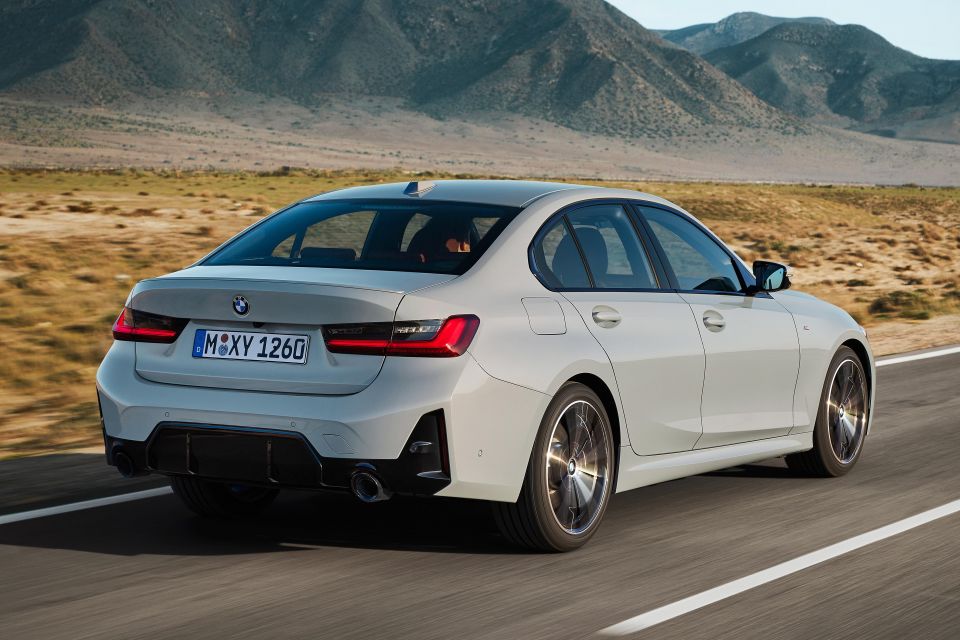
Where expert car reviews meet expert car buying – CarExpert gives you trusted advice, personalised service and real savings on your next new car.
You’ll find the 330e is more than capable of completing daily duties in electric mode, but in its Hybrid setting it will kick down and fire up the turbo petrol engine to give you the system’s full outputs if your right foot demands it.
At full noise (especially in the Sport mode’s Full e-Boost setting), there’s quite a bit of go. 215kW and 420Nm are nothing to sneeze at, and a couple of hard launches from ramp signals onto the freeway felt every bit as quick as BMW’s 5.8-second 0-100km/h claim.
In terms of zero-emissions range, the 330e’s trip computer tended to be fairly conservative, showing 40-45km after being fully charged overnight.
My commute to the CarExpert office is around 24 kilometres each way with two-thirds being on Melbourne’s Eastern Freeway (M3). I generally would hit 0km of EV range right before getting home, so 45-50km is achievable, especially with a lower portion of energy-intensive freeway driving.
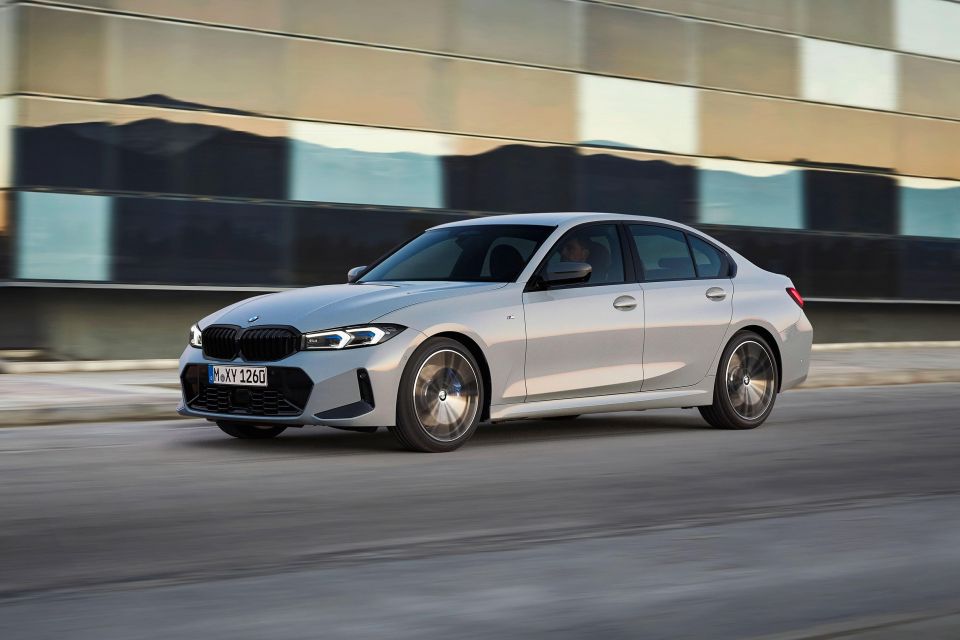
The 330e remains efficient once operating as a more conventional hybrid.
We concluded our loan of the 330e with the trip computer showing 3.1L/100km and energy consumption of 14.1kWh/100km.
We drove beyond our usual commute after depleting the battery of its usable EV charge – during this time the 330e seamlessly shifts between petrol and e-power. Given BMW claims 2.5L/100km with the battery charged, achieving the manufacturer’s claim seems very doable.
It’s a shame the mid-life update didn’t bring a bump in battery capacity, however. While PHEV rivals are few and far between in Australia, in Europe the latest Mercedes-Benz C300e packs a 25.4kWh battery pack and an EV driving range of up to 100km.
We’re also seeing newer plug-in hybrids hitting the Australian market from mainstream brands with more range, including the Kia Sorento PHEV (up to 68km) and Mitsubishi Outlander PHEV (up to 84km).
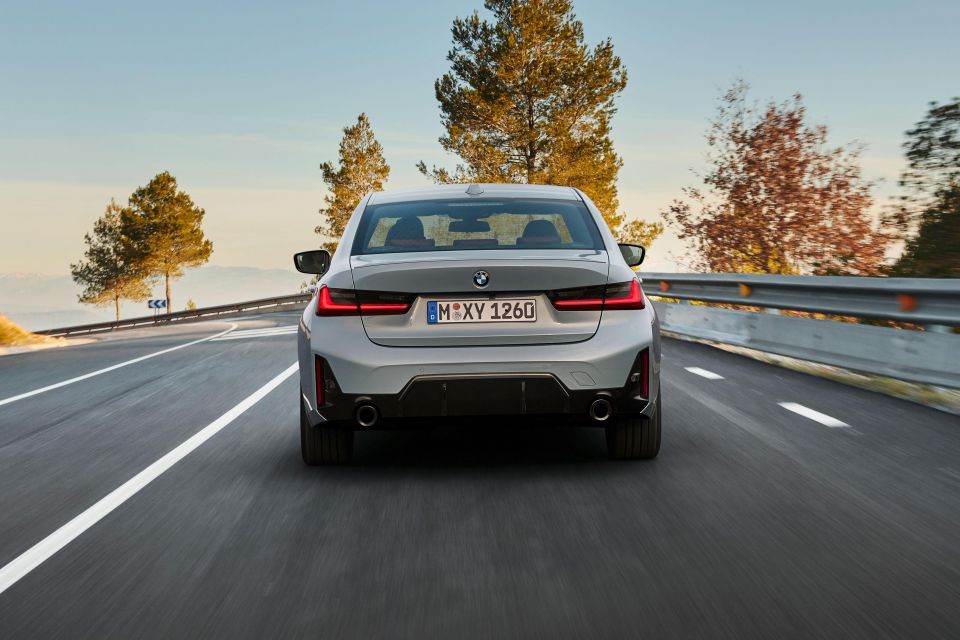
Turn up the dial a little and the 330e stays true to the nameplate’s more dynamic roots, with keen turn in and communicative driver controls.
Having all the hybrid bits adds around 240kg over the 330i Sedan, and while the 330e does an admirable job at being a fun-to-drive sports sedan, you can feel its heft compared to its petrol-only equivalent. It’s just not quite as sharp, so consider it more of a GT than a corner carver.
Out test car was launch spec with adaptive cruise control with stop and go functionality, without Driving Assistant Professional which adds semi-autonomous Steering and Lane Control Assistant, as well as a proper lane-keep assist that steers you away from approaching vehicles.
At the time of writing, this has since been added to the 330i and 330e.
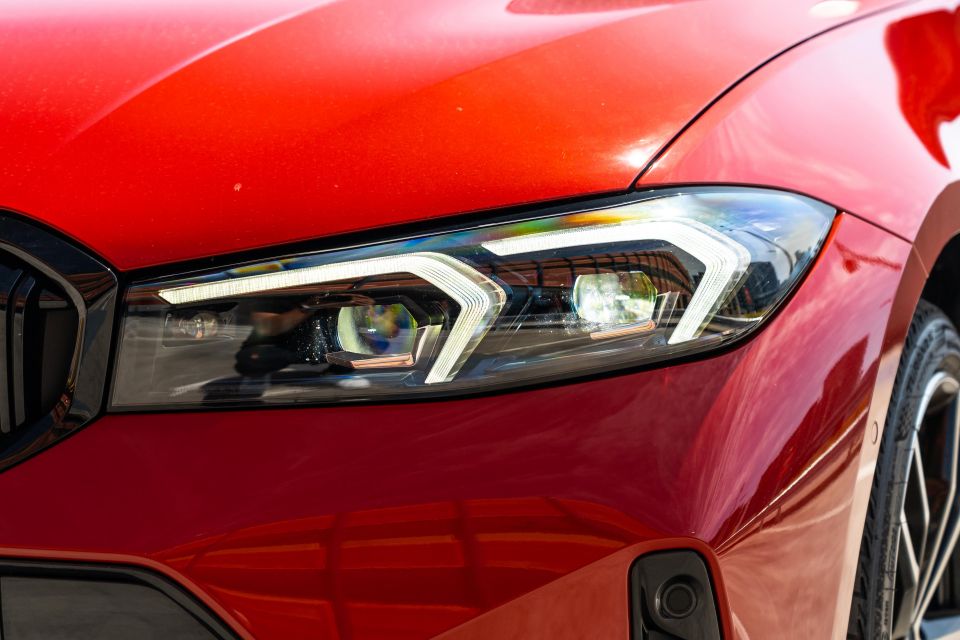

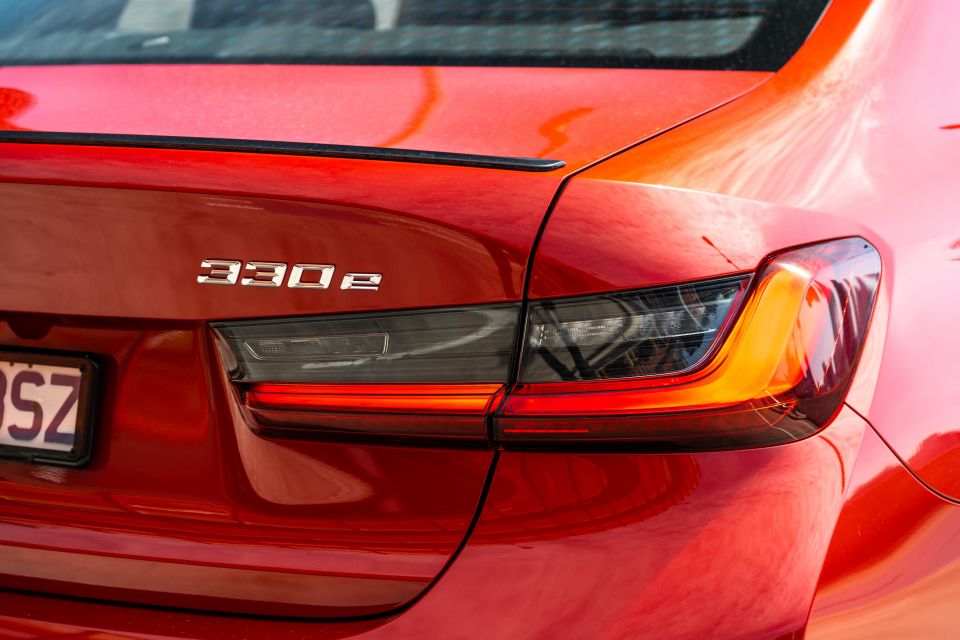

320i highlights:
*3-year subscription
330i adds:
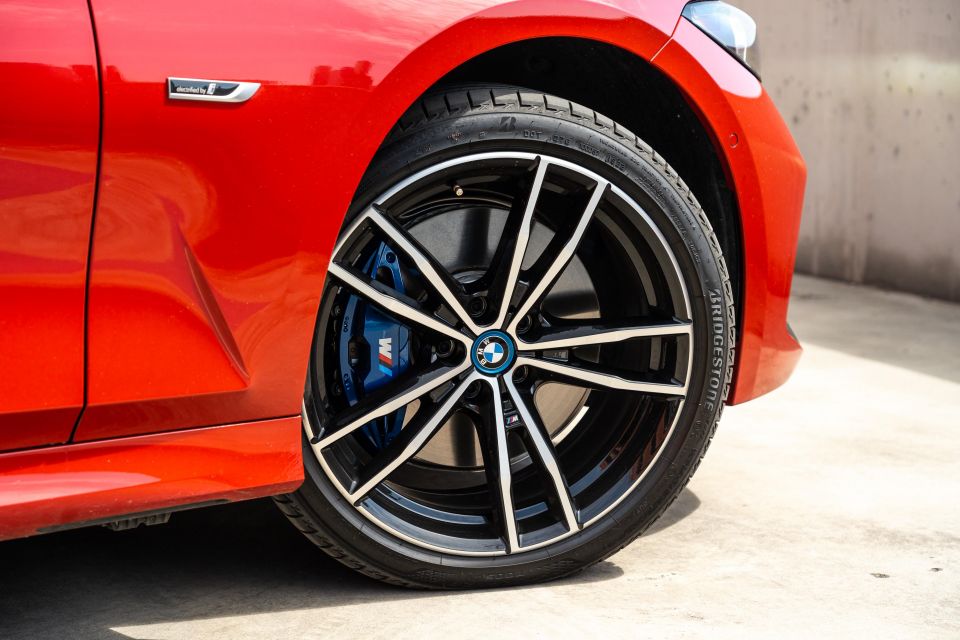
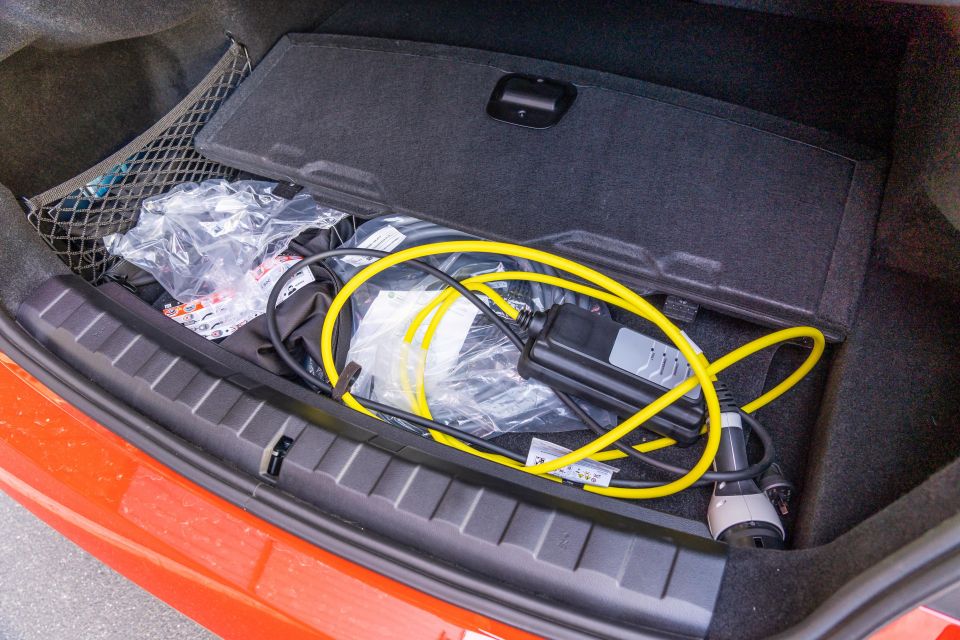
330e adds:
M340i xDrive adds:
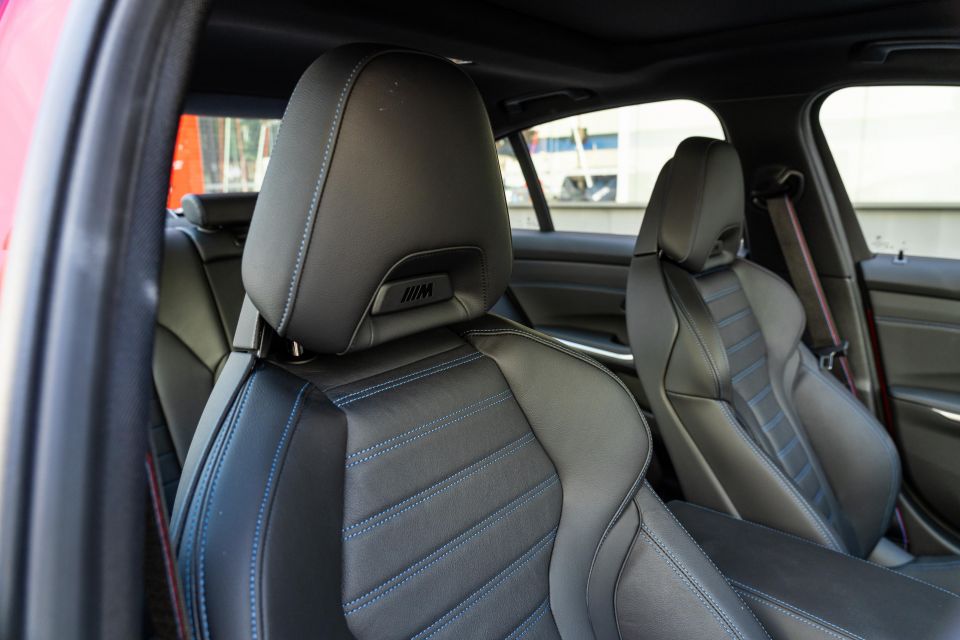
Visibility Package: $4800
Comfort Package: $3100
Executive Package: $1000
M Sport Pro Package: $2800*
*Only in conjunction with Visibility Package
Note the above option package pricing and contents is specific to the 330e Sedan. Other variants have varying prices and inclusions.
There are also a number of single-item options, including paint, trim and equipment items, that are also available at an extra cost.

The pre-update BMW 3 Series was crash tested by ANCAP in 2019 and received a five-star safety rating – though rating doesn’t apply to the M340i xDrive, which remains unrated by ANCAP and Euro NCAP.
It scored 97 per cent for adult occupant protection, 87 per cent for child occupant protection, 87 per cent for vulnerable road user protection, and 77 per cent for safety assist.
Standard safety features include:

330i adds:
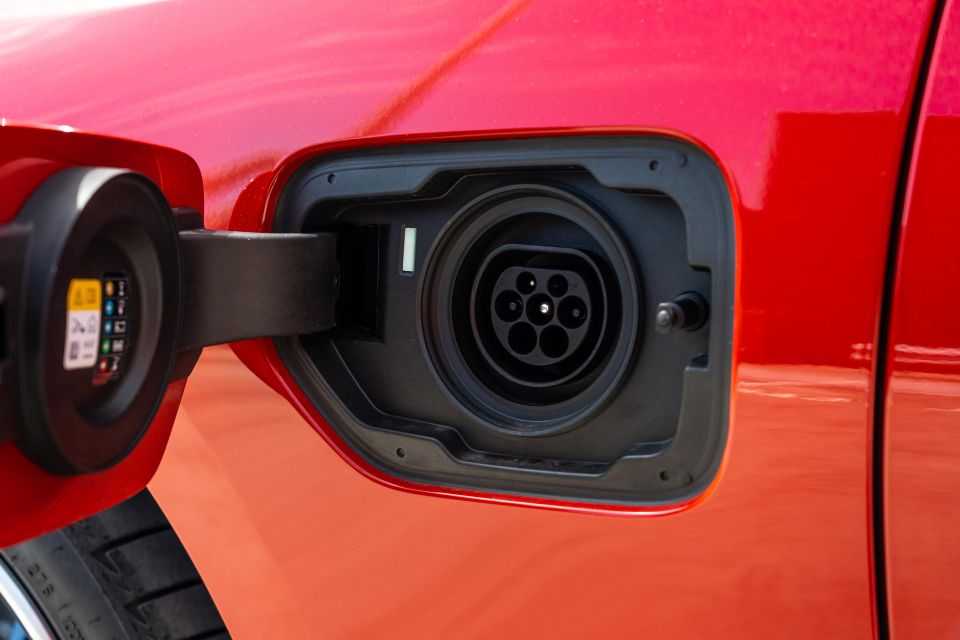
The BMW line-up is now covered by a five-year, unlimited-kilometre warranty as of October 1, 2022.
No longer does the Bavarian marque trail behind rival luxury brands in the ownership support stakes.
As for servicing, BMW offers a 5-year/80,000km Service Inclusive Basic maintenance package priced at $1800.
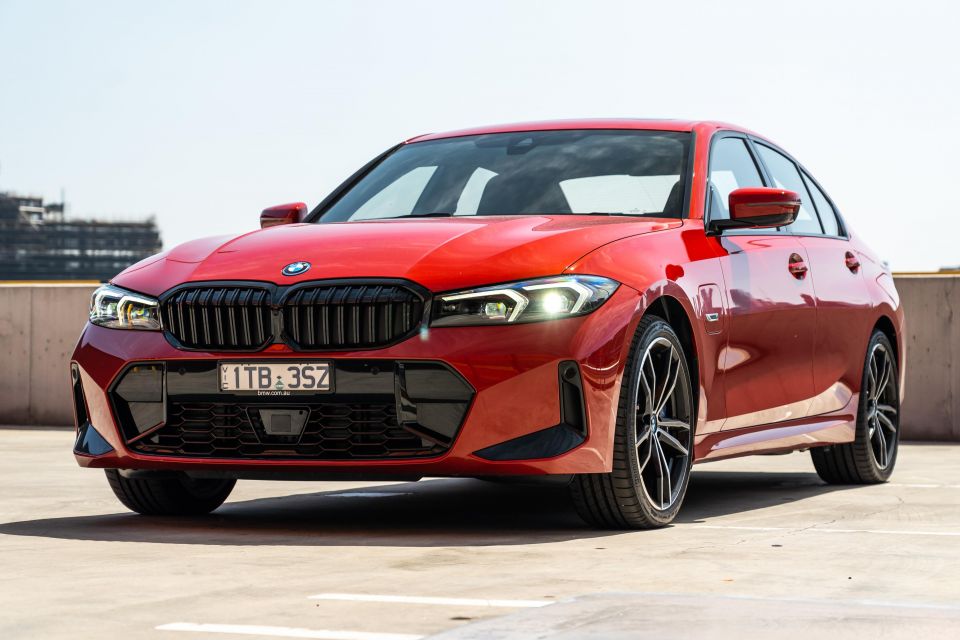
Unlike some people, I’m a believer in plug-in hybrids – if consumers are educated in the benefits, I reckon they make a lot of sense for a lot of Australians, particularly if they’re not ready for an EV.
The BMW 330e looks and feels like a normal 3 Series, and for day-to-day commutes where you’re rarely going to be calling on its Ultimate Driving Machine DNA, the fuel savings make a lot of sense when you account for the minimal premium over the 330i ($3000 is next to nothing for a PHEV).
The 30e drivetrain is much better suited to the 3 Series than the X3, and the mid-life LCI refresh has brought beautiful displays and more features than the old model to offset some of that extra cost.

However, there’s a number of drawbacks, not just for the 330e but for the new 3 Series in general. Little has been done to develop the drivetrains, and the 30e’s relatively short range doesn’t feel right for nearly $100,000 before taxes.
It’s also disappointing features like heated seats and a sunroof are still options at this price point, and that glossy new infotainment system brings with it some quirks given it removes a lot of the conventional switchgear and controls we’ve become accustomed to.
Let’s also not ignore the fact that, while only nominally dearer than its petrol equivalent, the 330e is priced higher than all-electric competition like the Polestar 2 and Tesla Model 3, and is within a whisker of the related i4 eDrive40 – which for $2000 more gets the 4 Series Gran Coupe body, a quicker 5.7-second 0-100 time, as well as up to 590 kilometres of WLTP-certified zero emissions driving range.
That’s not to say the 330e isn’t a good car if it suits your needs, but given the price positioning and ever-increasing competition, it doesn’t really stand out as a top buy.

Click the images for the full gallery
MORE: Everything BMW 3 Series
Where expert car reviews meet expert car buying – CarExpert gives you trusted advice, personalised service and real savings on your next new car.
James Wong is an automotive journalist and former PR consultant, recognised among Australia’s most prolific motoring writers.


William Stopford
20 Hours Ago


William Stopford
2 Days Ago


CarExpert.com.au
5 Days Ago


Max Davies
11 Days Ago
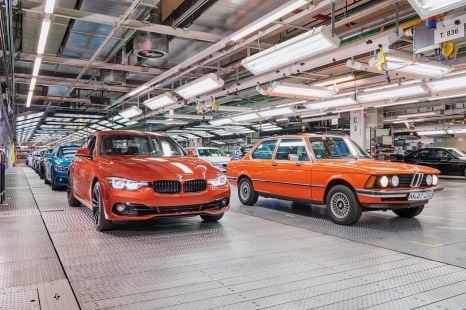

Ben Zachariah
14 Days Ago
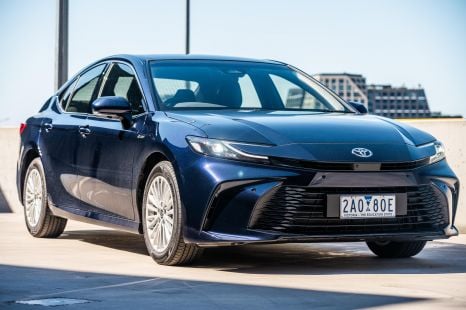

William Stopford
2 Months Ago